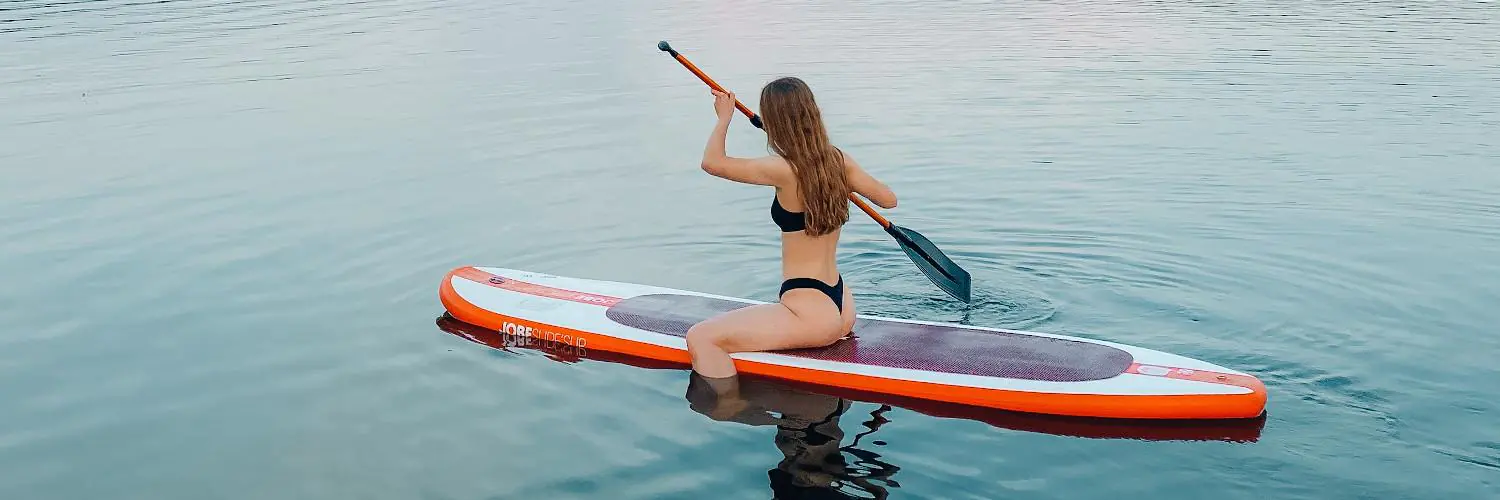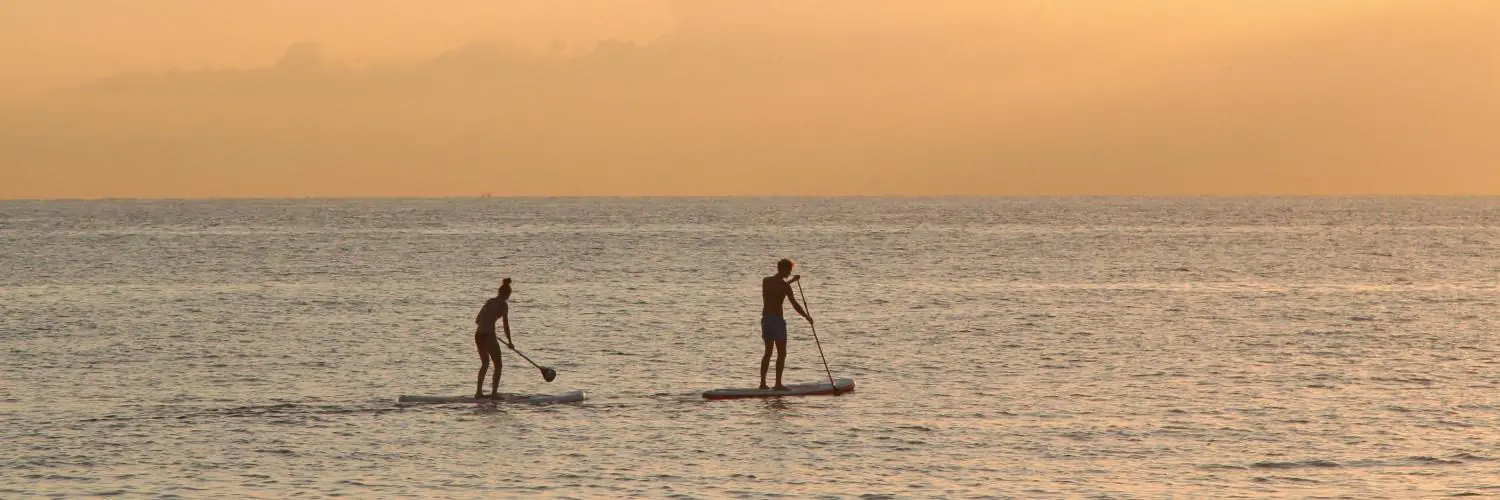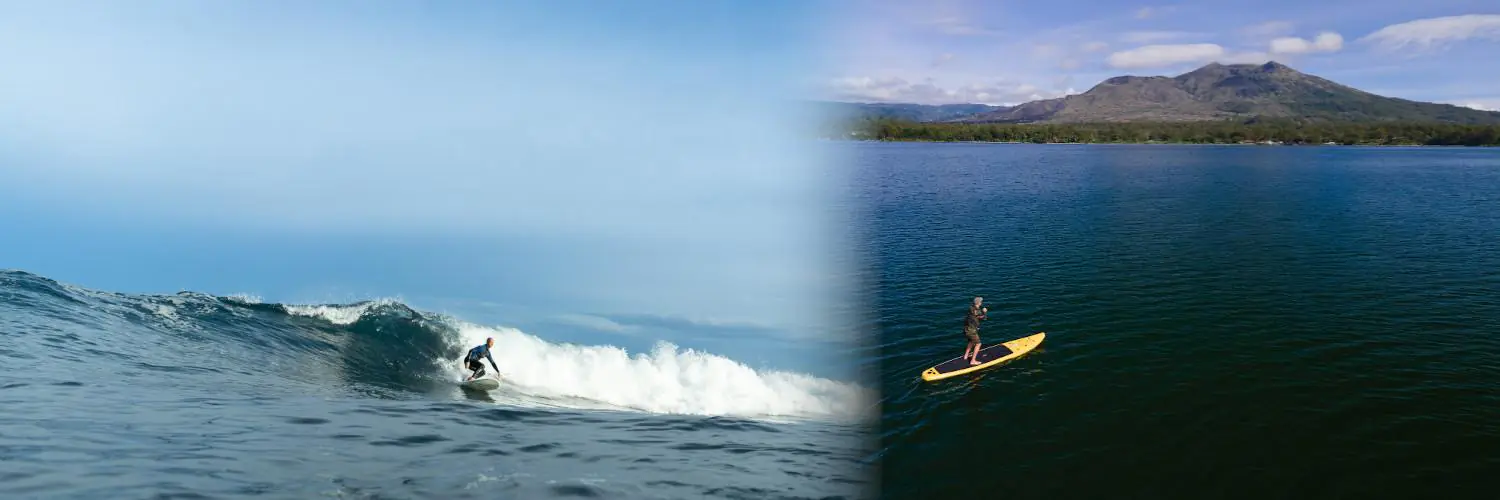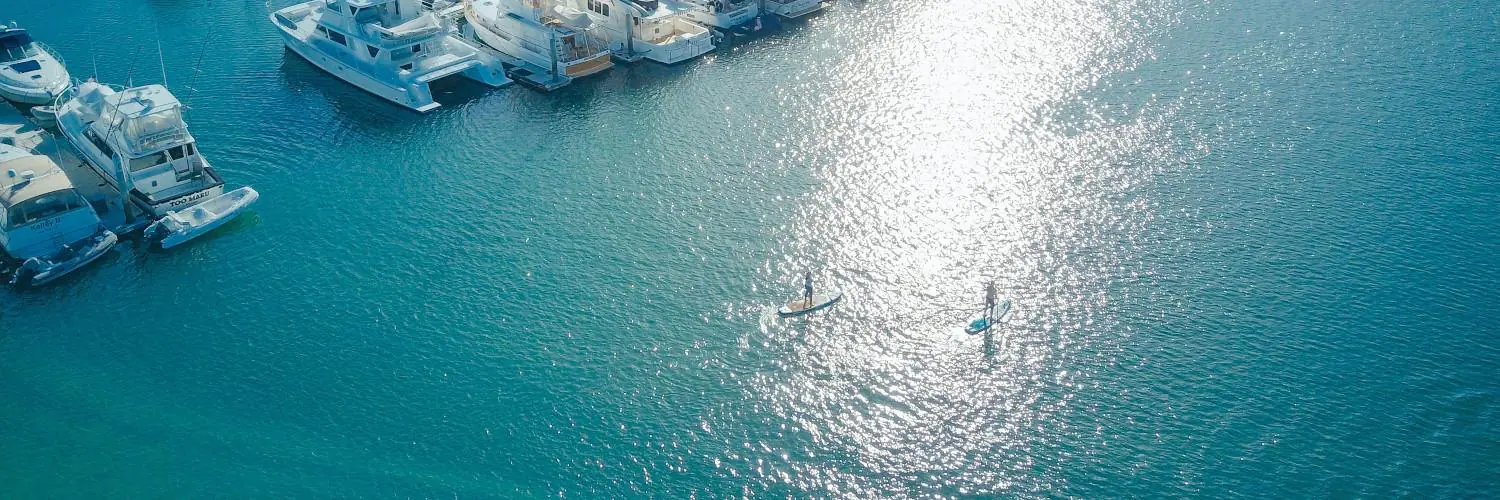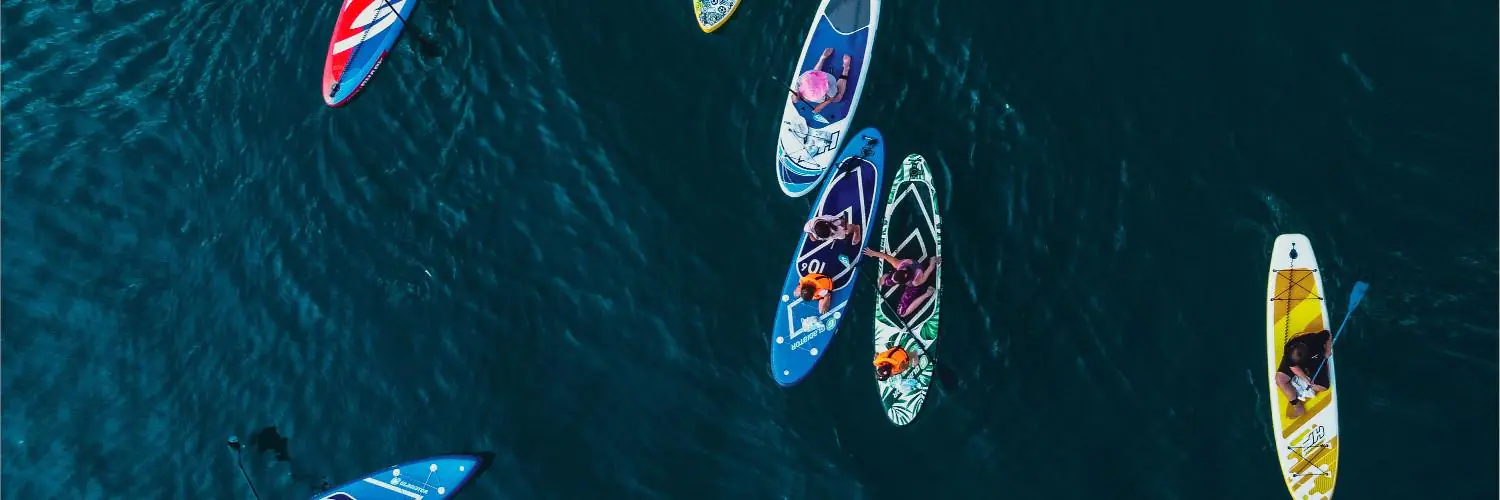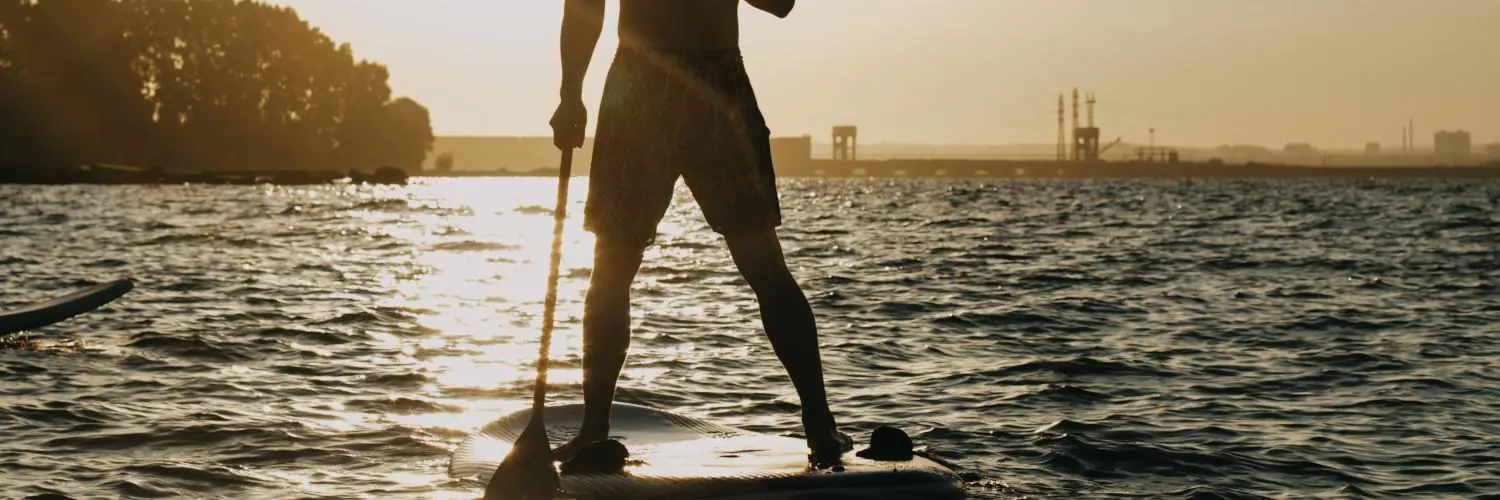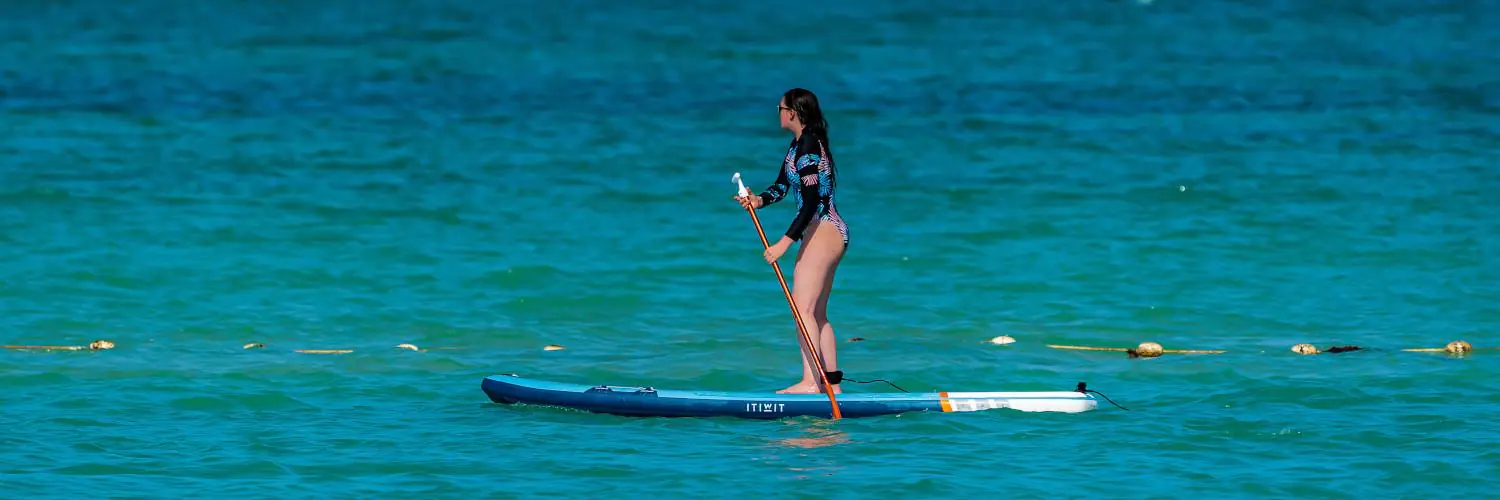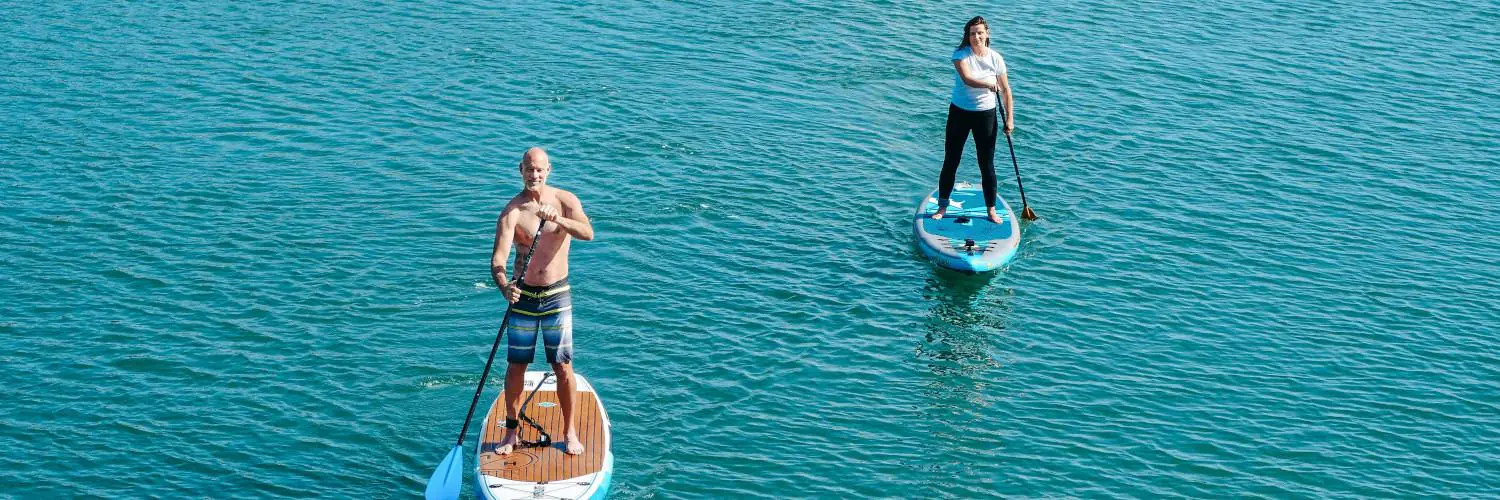A fantastic way for beginners to get out on the water and enjoy the outdoors is an increasingly popular water sport, stand up paddle boarding. Choosing the right stand up paddle board (SUP) is crucial for a great paddleboarding experience, especially for those just starting their journey. With a variety of SUP sizes and designs available on the market, finding the perfect fit might seem overwhelming.
The board’s length, width, and volume should be considered when selecting a paddleboard for a beginner. Most SUPs range between 10 and 12 feet in length and 32 to 34 inches in width. Beginners need to find their balance so a wider board, which offers more stability is better. A more stable platform is provided by a longer and wider board and is recommened for beginners.
The volume and weight capacity of the SUP should also be taken into account, as it directly correlates with the user’s weight. Proper flotation and stability in the water is provided by a higher volume board which supports more weight. Speed and maneuverability should be prioritized less over stability and ease of use for beginners until they have gained experience and confidence.
Table of Contents
Understanding Stand Up Paddle Boards
When starting with stand up paddle boarding (SUP), it’s essential to select a paddle board that caters to your skill level and specific needs. There are two primary paddle board types: inflatable and hard boards. Inflatable SUPs are relatively lightweight, easy to transport, and often more affordable. While better performance but potentially less convenient transportation is offered by hard boards by being more rigid and responsive.
Beyond the board material, the two main hull designs found in paddle boards are planing and displacement hulls. Planing hulls are flat and wide, which is ideal for beginners because it offers more stability and makes it easier to balance. Recreational paddling, SUP yoga, and fishing are suitable for this type of hull.
Displacement hulls, unlike their planing counterparts, have a pointed nose designed to cut through water. This gives more efficient gliding with less drag. Displacement hulls are ideal for intermediate to advanced paddlers looking for faster speeds and longer distances. Touring, racing, and fitness paddling are uses for these types of boards.
When considering board size, it is important to think about the user’s weight and intended use. A big board is more stable. Make sure it can hold your weight. A small board is easier to move and is better for skilled paddlers. Look at sizing charts to choose the right board as they show user weight and skill level.
Knowing different things like kinds of boards, hull shapes, and size is needed when choosing the right paddle board. Remembering these things will help you choose the right paddle board for what you need and how good you are.
Key Factors in Choosing a SUP
To ensure a safe and enjoyable experience on the water it’s crucial to consider several key factors when selecting a stand-up paddleboard (SUP) for a beginner.
Size: The board’s performance and its suitability for the rider is significantly impacted by the size of a paddleboard. A larger board is better for beginners because they provide more stability. Boards between 10 and 12 feet in length are recommended for most new paddlers.
Weight: The weight of the SUP matters because it influences the ease of handling and transportation. Lighter boards are easier to carry, but they might be less stable than heavier ones. When picking a board for beginners, you need to balance stability and manageability.
Length: As mentioned earlier, a board between 10 and 12 feet in length is generally recommended for beginners. However, the rider’s preferences, fitness level, and intended activity may necessitate choosing a different length. Shorter boards (8-10 feet) can be more maneuverable and potentially suitable for kids, while longer boards (12+ feet) are ideal for touring and long-distance paddling.
Width: The width of a paddleboard directly affects its stability. Beginners who are still learning will like a wider board as they are more stable. An ideal starting width might be around 30-34 inches, but riders should test various widths to find the one that suits their needs best.
Thickness: A thicker board will typically have a larger volume and provide more stability, important for inexperienced paddlers. Boards with a thickness of around 4 to 6 inches are generally recommended for beginners.
Volume: The volume of a SUP determines its buoyancy and carrying capacity. It is crucial to choose a board with sufficient volume to support the rider and their equipment. Larger riders may need a board with more volume to ensure adequate buoyancy.
Stability: Stability is essential for beginners as they learn to balance and paddle effectively. A more stable board will have a larger surface area and wider width, providing a more forgiving platform for new paddlers.
When choosing a SUP for beginners, it’s essential to consider the individual’s preferences as well as their body type, fitness level, and intended use. Beginners can have a smooth introduction to the world of stand-up paddleboarding by focusing on the factors listed above and ensuring that the board is suited to the rider.
SUPs for Different Skill Levels
Beginner Paddle Boards
The key factor beginners should consider when choosing a paddleboard are stability, ease of use, and safety. A good starting point is a board that is 10-12 feet long and 32-34 inches wide. Those just starting out in the sport will appreciate wider boards because they have more stability. It is also recommended to look for a board with a weight capacity of up to 300 lbs, as this will provide additional support for the rider.
- Length: 10-12 feet
- Width: 32-34 inches
- Weight capacity: up to 300 lbs
Intermediate Paddle Boards
As skill level and experience increase, intermediate paddle boarders may start to prioritize speed and maneuverability over stability. A slightly longer and narrower board might be more appropriate for them, with dimensions around 11-12 feet long and 30-32 inches wide. These perform better on the water while giving sufficient stability for intermediate riders.
- Length: 11-12 feet
- Width: 30-32 inches
- Weight capacity: varies by model
Advanced Paddle Boards
Advanced paddle boarders often have very specific needs, depending on their preferred type of waters or activities. This level of rider can fine-tune their board choice based on their own physical characteristics and the conditions they face. For example, a touring or race board might be suitable for those seeking speed and straight tracking, with dimensions around 12’6" long and 32 inches wide. Meanwhile, dedicated surfers or trick-focused riders might opt for a shorter and more maneuverable board around 9-10 feet long.
- Length: 9-10 feet (surfing/tricks) or 12’6" (touring/racing)
- Width: varied depending on usage
- Weight capacity: varies by model
Stand Up Paddle Board Activities
Stand up paddle boarding (SUP) offers various activities for beginners to enjoy. From leisurely paddles on calm waters to challenging athletic pursuits, SUP caters to various preferences and skill levels.
One popular SUP activity is surfing. Utilizing planing hulls with a flat and wide design, these paddle boards are designed for maneuverability and riding on top of the waves. Stand-up paddle surfing is like regular surfing, but with a bigger and more steady board, letting new riders ride waves with more balance.
Touring on stand up paddle boards is another activity that attracts beginners. With longer and narrower displacement hulls, touring SUPs are designed for efficiency and tracking in calm waters. Traveling on a paddle board lets new people go into nature and have longer adventures on lakes, coastal places, or rivers.
Racing usually engages more athletic individuals. Stand up paddle board races range from recreational competitions to high-intensity events that test participants’ endurance, skill, and speed. An optimal board length for enhanced performance and a sleek design are featured by racing SUPs.
For those looking to combine fitness and relaxation, yoga SUP offers the perfect balance. Bigger, strong boards make a stable place for yoga on water. Newbies grow their link to nature, get better balance, focus, and bendiness through SUP yoga.
Fishing SUP is an increasingly popular activity for avid anglers. Specially designed paddle boards come equipped with features like rod holders, gear mounts, and increased storage capacities. Beginners can paddle to their favorite fishing spots and cast their lines in a unique and environmentally friendly way.
From surfing and touring to racing, yoga, and fishing, stand up paddle boarding offers a wide array of activities for beginners. They can choose the best activity that suits their interest and ability level to have an enjoyable and enriching experience on the water.
Additional Features and Considerations
Paddle Length and Type
When choosing a stand-up paddle board, it’s crucial to consider the paddle length and type. A paddle that’s too short or too long will hinder balance and cause discomfort while paddling. Typically, a paddle should be 8 to 10 inches taller than the user’s height. Beginners may opt for an adjustable-height paddle to find their ideal length as they gain experience.
Paddles are different because of materials and weight. Aluminum paddles are affordable but heavier compared to lightweight options like carbon fiber or fiberglass. Material:
- Aluminum: Affordable, heavier
- Carbon fiber: Lightweight, durable, more expensive
- Fiberglass: Lightweight, less expensive than carbon fiber
Fins and Center Fin
Fins help with stability, tracking, and maneuverability of the paddle board. Most boards come with a tri-fin setup, including a larger center fin for straight tracking and two smaller side fins for better control in turns. Beginners should look for a board with a removable center fin, allowing them to adjust the fin setup for different water conditions and skill levels.
Fin setups:
- Tri-fin: Offers stability, tracking, and control
- Single-fin: A single center fin, suitable for flatwater paddling
Rails
Vital in the board’s performance, rails are the edges of a paddle board. Thinner rails allow for better maneuverability and responsiveness in turns while thicker rails provide more stability. Beginners should look for a paddle board with moderately thick rails to ensure a stable and forgiving ride as they learn and progress in the sport. For enhanced performance, they can move on to boards with thinner rails as they gain experience and confidence.
Selecting the Right SUP for Your Needs
Evaluating Your Abilities
When choosing a stand-up paddleboard (SUP) for beginners, it is essential to consider the user’s ability level. A beginner-friendly board should have more stability and a larger surface area to support a wide range of abilities. Typically, boards with a width of 32 inches or more will provide better balance for novice paddlers. Additionally, choose a board with a suitable length based on the user’s height and weight.
Considering Your Goals
Various types of SUPs cater to different goals and activities. Some options include:
- All-around boards: Versatile and suitable for various conditions, these are an excellent choice for beginners who want to try multiple paddleboarding activities.
- Touring boards: Designed for longer distances and better tracking performance, these are better suited for individuals looking to cover greater distances and improve their overall performance.
- Yoga boards: The perfect boards for people interested in practicing SUP yoga have a wider deck and enhanced stability.
Choose a board that aligns with your goals and interests to ensure you get the most out of your SUP experience.
Factoring in Water Conditions
The type of water you plan to paddle in will influence your SUP choice:
- Flatwater paddling: For calmer waters (such as lakes and rivers), wider, more stable boards are ideal for beginners.
- Ocean paddling: For oceans with waves or choppy conditions, boards with a pointed nose and tapered tail will perform better and offer more maneuverability.
Consider the water conditions in your area and select a board designed for those environments.
Accounting for Budget and Travel
When selecting a SUP, consider your budget and the ease of transportation:
- Inflatable SUPs: Lightweight, portable, and generally more budget-friendly, inflatable SUPs are excellent for those with limited storage or transportation options. Suitable for adults, children, and traveling, they often come with travel-friendly gear.
- Solid SUPs: Higher performing but heavier and more expensive, solid SUPs are better suited for those prioritizing performance and durability.
Select a board that fits your budget and travel requirements to ensure your SUP experience is enjoyable and hassle-free.

